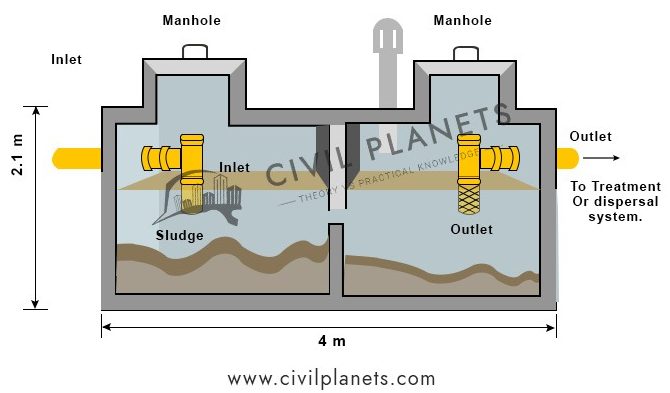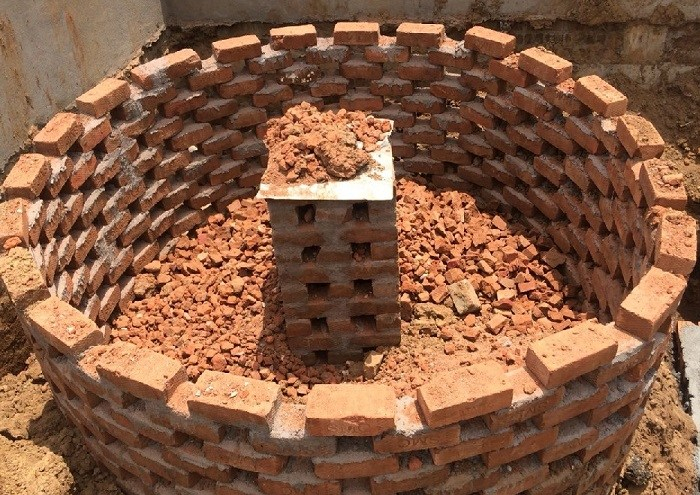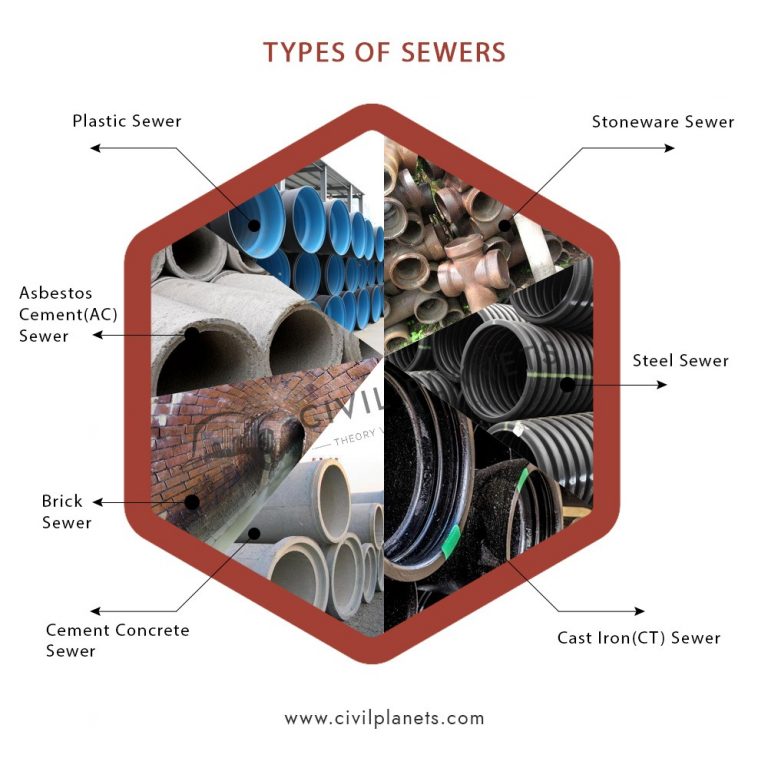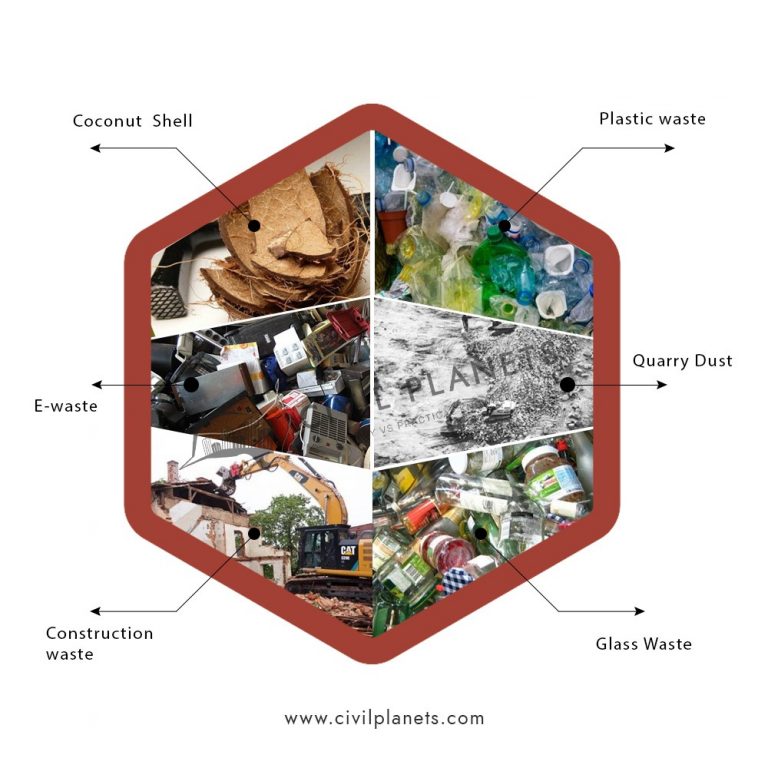A little confusing thing in house construction is the design of the septic tank and soak pit for the households.
Now we are going to discuss the septic tank design along with an example. Before that, we are going to take a look at the purpose & process of the Septic tank.
Design of Septic Tank
A septic tank is designed to carry out the liquid waste of the household or community including human feces. It has to be constructed based on the instruction given in the Indian Standard Code IS 2470.
Where does the septic tank require?
In rural, urban, and semi-urban areas where adequate water supply is available from the pipe but not engaged with a proper sewer system. It is where the septic tank is suitable for the disposal of the night system in those areas.

The septic tank was either constructed by the brick wall or RCC wall in the rectangular or circular shape with a minimum of two chambers.
A septic tank should be constructed away from the exterior wall of the building and should be placed open to the sky. It should not be installed in the marshy area.
The function of Septic Tank
The septic tank was designed to retain the wastes at a minimum period of 24 to 48 hours which is received from the households. The wastes retaining period in the septic tank is called the detention period.
During that period certain biological decomposition will happen by the action of anaerobic bacteria. The night soil will leave a small quantity of sludge, settled down the tank. The balance surface water runs to the soak pit through the outlet pipe.
What is meant by Sludge?
The settled semi-solid waste in the tank is called Sludge. The sludge was cleaned out from the tank at every 1 or 2 year cycle period.
The septic tank have to be designed and constructed accordingly.
Soak Pit or Seepage Pit
A soak pit is constructed in the natural ground by the dry bricks with open joints in a circular shape as shown in the below picture. The wastewater can easily soak on the ground.
The soaking pit should be raised above ground level and the surface water should not enter into the soak pit.
Design consideration of Soak Pit
- The soak pit shall not be less than 900mm in diameter& 1500mm in depth below the invert level of the inlet pipe.
- The absorption area of the soak pit could be 1 Sqm to 1.5 Sqm per head of the user.
- The soaking pit should be covered by the precast slab.
Design consideration of Septic Tank Design
General
- Surface and subsoil water should not enter the tank.
- The solid waste, paper, napkins should not be flushed into the septic tank to avoid blockages.
- The kitchen water should not enter the septic tank.
- The sludge may be cleaned out every 1 or 2 years.
Size and Specification
- The minimum width of a septic tank is 600mm and the depth should be 1225mm including a freeboard of 300mm from the water level.
- A partition wall raised at a distance of half-length of the tank and a 150mm x150mm hole is made at 450mm height in the wall to connect both chambers.
- The septic tank wall thickness should be a minimum of 230mm and the floor concrete should be made in M10 or M15 grade of Concrete.
- The inner and outer walls should be plastered with a minimum of 15mm thickness along with the waterproof chemical.
- The ventilation pipe must be raised 1800mm above the roof.
Let us see an example of a septic tank design along with an example.
Septic Tank Design Example
Let us estimate the Septic Tank size for a Home – 10 Persons. 
(We have already discussed Water Tank Size & Capacity Calculation)
Daily Water Usage for a Home – 10 Person
- Cooking – 5 Liters
- Bathing & Toilet – 85 Liters/Person
- Washing clothes & Utensils – 30 Liters
- Cleaning House – 10 Liters
- Other – 5 Liters
Total – 135 Liters/Day Approximately for a person
Hence for 10 Person = 135 x 10 = 1350 Liters
Assume detention period – 48 hours (2 days)
So the septic tank should have the capacity to retain the household wastewater at least 2 days.
Total wastewater in 2 days – 1350 x 2 = 2700 Liters
Let us take 3000 Liters capacity minimum for the house.
The minimum depth of the Septic tank is taken as 1.8m
Sludge settled down per person – 30 litres/year and sludge removal once every 2 years.
So total sludge = 30 liters x 10 persons x 2 years = 600 Liters
Total tank capacity = 3000+600 = 3600 Liters
1 m3 = 1000 Liters = 3600/1000 = 3.6 m3
Area required @ 1.8m depth = 3.6/1.8 = 2Sqm
Length & breadth ratio of Septic Tank is 2:1
So 2BxB = 2 Sqm where B=1m
Minimum width of the the tank – 750mm
So that L = 4 x 1 = 4m
L – 4m B – 0.75m Depth – 1.8+0.3 = 2.1m (free board- 300mm)
Tank capacity = 4 x 2.1 x1 = 8.4 m3 = 8.4x 1000 = 8400 Liters

Standard Sizes of Septic Tank for Different Users
| Septic Tank Users | Length in Metre | Breadth in Metre | Depth in Metre | Liquid Capacity in Litres | Liquid Capacity per user in Litres |
| 5 | 1.2 | 0.6 | 0.9 | 650 | 130 |
| 10 | 1.8 | 0.6 | 0.9 | 970 | 90 |
| 20 | 2.5 | 0.75 | 1 | 1880 | 90 |
| 30 | 2.8 | 0.75 | 1.2 | 2500 | 84 |
| Add additional 300mm Depth for Free Water Board | |||||
Septic Tank Size Calculator





12 Comments
Nicely explained
Thanks… Stay Connected for more topics..
Well stated .easy to understand.
hi there i need calculation details of soakage pit
what is the role of brick bats in the soakpit.
Very educative article…kindly highlite more information on the soak pit construction and it’s connection to the outlet as well
Thanks so much 😊
Thank you for nicely explained and clear detailed guide.
Great work…!
What should the base of the pit be made of? Plaster? Bricks? Slab? nothing?
very nice but should be explained with a numerical example
THANK YOU VERY MUCH SIR FOR THIS INFORATION. IT HAS BEEN VERY HELPFUL TO ME.
thanks I have enjoyed passing through such an understandable calculations